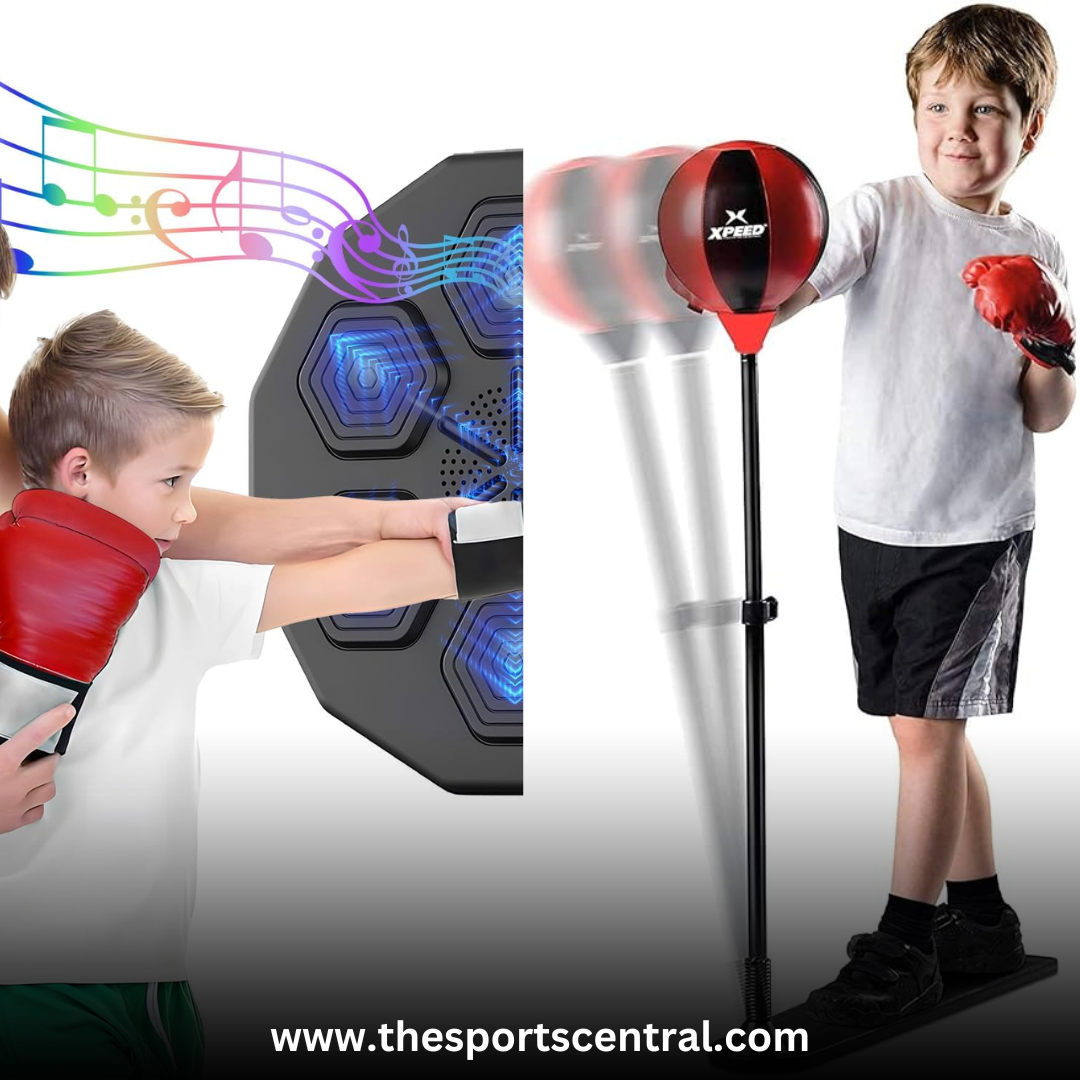Boxing machines are gaining popularity in arcades, gyms, and even home setups. They promise to provide entertainment, physical exercise, and an outlet for energy. But, when it comes to kids, safety is always a top concern. Are these machines safe for kids to use? Should you consider getting one for your child? This article delves into these questions, discussing safety, benefits, and how to choose the right machine.
What Are Boxing Machines?
Boxing machines are electronic devices that measure the force of a punch or kick. They typically consist of a punching pad or bag and a display unit. Users punch or strike the pad, and the machine calculates the power and speed of each hit.
These machines are often found in amusement parks, arcades, and fitness centers. Many parents are now considering them for home use due to their potential benefits for physical fitness. They are available in a range of sizes, including versions made specifically for kids.
The Appeal of Boxing Machines for Kids
Kids love boxing machines for several reasons:
- Fun and Engaging: The competitive nature of these machines makes them fun and engaging. Kids get to see their scores, which motivates them to keep trying.
- Physical Activity: They provide a great way to encourage physical activity. Instead of spending hours in front of screens, kids can burn off energy while having fun.
- Developing Coordination: Using a boxing machine can help improve hand-eye coordination, agility, and strength.
- Safe Outlet for Energy: It gives kids a safe outlet for releasing pent-up energy and emotions.
But, just because kids love them doesn’t mean they’re always safe. Parents need to consider various factors before allowing their children to use a boxing machine.
Are Boxing Machines Safe for Kids?
The safety of boxing machines for kids depends on multiple factors, such as the design, the child’s age, and supervision. Let’s break it down:
1. Machine Design
The design of the boxing machine plays a crucial role in determining its safety. Machines designed specifically for kids are smaller, have lower impact resistance, and often come with soft padding. This makes them safer for young children who might not have the strength or control needed to use adult machines.
What to look for:
- Adjustable height and resistance levels.
- Soft padding or inflatable punching surfaces.
- Child-friendly interface with no sharp edges.
Machines meant for adults can pose a safety hazard due to their larger size and harder surfaces. Adult machines are built to withstand stronger forces, which could result in injury if used by a child.
2. Age Appropriateness
Age is an important consideration. While some machines are suitable for children as young as three, others may be better suited for older kids or teens. Younger children lack the motor skills and strength needed to use more complex machines safely.
Ideal Age Groups:
- 3-5 Years: Look for soft, inflatable punching bags or kid-specific boxing machines. These are safe and don’t require much force.
- 6-10 Years: Choose adjustable machines with moderate resistance.
- 11+ Years: Machines with higher resistance and features like score displays can be considered.
Check the manufacturer’s recommendations to ensure the machine is age-appropriate.
3. Supervision and Guidance
Like with any physical activity, supervision is crucial. Kids need to be shown how to use the machine correctly. Incorrect punching or kicking techniques can lead to injuries such as sprained wrists, bruises, or even fractures.
Teach kids to keep their wrists straight and to use their whole body when punching, not just their arms. They should also wear protective gear like gloves or hand wraps to protect their knuckles and wrists.
Supervision Tips:
- Always monitor children when they’re using a boxing machine.
- Set clear rules and limits on how much force they can use.
- Encourage them to take breaks and not overexert themselves.
4. Safety Features
Choose machines that come with built-in safety features like shock absorption and stability. Machines with weighted bases or suction cups prevent tipping, while shock-absorbing pads reduce impact on joints.
Avoid machines with unstable bases or hard, non-padded surfaces. Look for machines that provide clear instructions and warning labels.
Potential Risks of Boxing Machines for Kids
Although boxing machines can be safe when used correctly, there are potential risks:
- Joint and Muscle Strain: Kids may strain their joints or muscles if they use a machine that’s too resistant or if they use improper form.
- Injuries from Misuse: Misusing a boxing machine can result in cuts, bruises, or sprains. Young kids might swing too wildly, leading to a loss of balance or accidental collisions.
- Psychological Impact: If not monitored properly, the competitive aspect of these machines could cause frustration or aggression. Kids might feel pressured to hit harder to achieve higher scores.
- Overexertion: It’s possible for kids to overexert themselves, leading to fatigue, soreness, or even dehydration. It’s crucial to set time limits and encourage breaks.
How to Choose the Right Boxing Machine for Kids
Choosing the right machine can minimize risks and ensure your child’s safety. Here’s a checklist to consider:
- Age-Specific Design: Choose a machine designed for your child’s age group. Machines for younger kids should have softer surfaces and less resistance.
- Adjustable Features: Look for adjustable height, resistance, and speed settings. This allows the machine to grow with your child and adapt to their developing skills.
- Durability and Stability: Ensure the machine is stable and durable. A sturdy base will prevent tipping, and high-quality materials ensure longevity.
- Safety Padding: Check for extra padding on the punching area and the base. Padding protects against impact injuries.
- Feedback Mechanism: Some machines offer feedback on punching strength or speed. This can be motivating, but ensure it’s not overly competitive.
- Brand Reputation: Choose a reputable brand known for quality and safety. Look for reviews from other parents and ensure the machine meets safety standards.
- Portability and Storage: Consider how easy it is to move and store the machine. Inflatable machines can be deflated and stored, while larger ones might need dedicated space.
- Noise Levels: Some machines can be noisy. Check reviews or test the machine if possible to ensure it won’t be disruptive.
Benefits of Boxing Machines for Kids
When used properly, boxing machines can provide numerous benefits:
- Improves Physical Fitness: Boxing is a full-body workout. It strengthens muscles, improves cardiovascular health, and boosts endurance.
- Develops Coordination and Balance: Kids learn to balance their bodies, improving coordination and spatial awareness.
- Enhances Focus and Discipline: Punching a target requires concentration. Kids develop focus, hand-eye coordination, and timing.
- Builds Confidence: As kids get better at using the machine, they feel a sense of accomplishment. This boosts self-esteem and confidence.
- Teaches Self-Control: Kids learn to control their movements, power, and reactions. It’s a great way to channel energy in a controlled environment.
- Encourages Healthy Competition: The scoring feature can motivate kids to set and achieve personal goals. It encourages a healthy competitive spirit.
Setting Up a Safe Environment
Setting up the right environment is as important as choosing the right machine. Here’s how to create a safe space for your child:
- Choose a Stable Surface: Place the machine on a stable, flat surface. Avoid areas with loose rugs or slippery floors.
- Create a Clear Zone: Ensure there’s enough space around the machine. Clear any objects that could cause tripping or collisions.
- Use Protective Gear: Have your child wear gloves or hand wraps to protect their hands. If they’re kicking the machine, consider shin guards.
- Limit Usage Time: Set a time limit on machine use to prevent overexertion. Ensure your child takes breaks and hydrates.
- Monitor Technique: Teach your child proper punching techniques. Monitor their form and correct it as needed.
- Set Boundaries: Make sure your child understands not to use excessive force. Set boundaries to prevent injuries.
Alternatives to Boxing Machines
If you’re unsure about a boxing machine, consider these alternatives:
- Inflatable Punching Bags: Softer and safer, these bags are ideal for younger kids. They’re less likely to cause injury and are easy to store.
- Boxing Classes: Enroll your child in a supervised boxing or martial arts class. This provides professional guidance and a safe environment.
- Home Boxing Setups: A traditional punching bag and gloves can offer a safer experience, provided there’s supervision.
- Interactive Video Games: Some video games offer virtual boxing experiences. These can be fun and safe alternatives to physical machines.
Final Verdict: Are Boxing Machines Safe for Kids?
Boxing machines can be safe for kids when used appropriately. Choose machines designed for their age, supervise their usage, and ensure they follow safety guidelines. The benefits can be numerous, from improved physical fitness to better coordination and confidence.
However, be mindful of the potential risks. Avoid adult machines, set clear usage rules, and prioritize safety over scores or competition. When in doubt, consult with a fitness expert or pediatrician before making a purchase.
In conclusion, boxing machines can be a great addition to a child’s fitness routine. They offer an engaging way to stay active, burn energy, and develop key skills. With the right machine and supervision, kids can enjoy all the benefits while staying safe.










